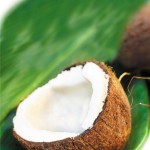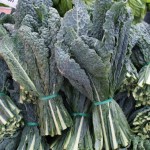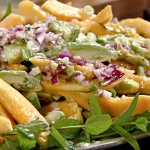The Chinese word for acupuncture is zhen jiu, and translates as ‘needle and fire’, or as ‘acumoxa therapy‘. Where does the fire come from? Well, there is a technique that has been employed by acupuncturists over the ages, and it is called ‘moxibustion’. It is a special form of heat therapy. Below, we will describe this and some of the other techniques which, while lesser known here in the U.S., are quite valuable. They are commonly used by acupuncturists all over the world, and we at New England Acupuncture & Herb Clinic utlizie them whenever they can be of value to the patient, offering another way to move closer to the desired therapeutic outcome and achieve success.
Moxibustion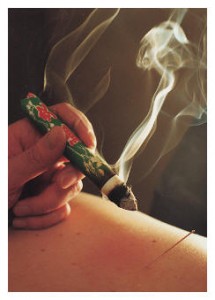
As alluded to above, moxibustion is a special form of heat therapy commonly used as part of acupuncture. Not every patient will receive moxibustion. But when it is used, its effects can sometimes be remarkable.
Essentially, the practice of moxibustion involves the burning of various substances near the acupuncture points on the body. While there are some forms of direct moxibustion (i.e. burning it right on the skin), we do NOT use the direct method here at the clinic. Instead we use the indirect method, which means the moxa is comfortably held at a distance from the body while the heat gently penetrates the body and benefits the patient. Patients find this therapy very enjoyable.
The most common substance used for moxibustion is artemisia vulgaris, an herb. Wen it is ground up and prepared for use in the clinic, it can resemble brown cotton, or ground up twigs. Other substances can be used for various therapeutic reason. Indications for the use of moxa include pain worse with cold and better with heat, a tendency to feel cold all the time, fatigue, conditions which in chinese medicine would be termed, ‘damp conditions’, and others. It may even be indicated in breech presentations in pregnant women.
The moxibustion is said to increase the yang energy of the body, dispel cold, promote cirulation of qi and blood, and transform damp. One of the wonderful uses I have found for moxa, is its use in helping older women who experience a feeling of distention and discomfort in their urinary bladder, but who have no infection. They often also have a feeling of incomplete voiding of urine when they go to the bathroom. Another specific example of the use of moxi is cases of arthritis where the joint pain is worsened by cold weather. For more examples of real life cases treated here at the clinic please go to our case history page. There we have posted some of the cases we have treated, in order to illustrate some of the principles of how Chinese medicine works and the results that can be attained.
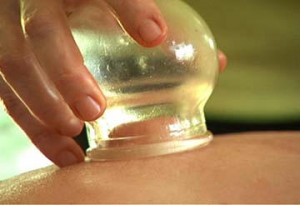 Cupping
Cupping
Cupping is pretty straight forward. It is the application of ‘suction cups’ to specific areas of the body, most often the back and shoulders. This technique can be combined with others, or used by itself. It can be very effective for relieving muscle tension. This is its most common use. Sometimes the cup(s) is placed in a particular spot and left for a few minutes. Other times hypoallergenic massage oil may be rubbed into a broad area and the cup can be moved back and forth over this area. That is termed ‘moving cupping’, or ‘sliding cupping’. There are some people who may be sensitive to the pressure, but most patients seem to find it fine, and even quite pleasant.
Tui Na (no, its not pronounced “tuna”. It is “tway na” or “twee na”, depending on who you ask).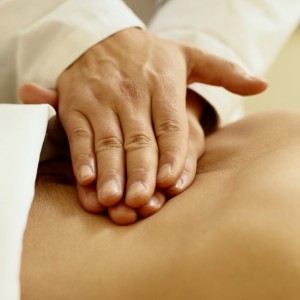
This translates as ‘pushing and grasping’. While it sounds a bit rough, it is not. Actually, it is a sophisticated and ancient form of massage developed in China. It has been imported to other coutries where it was modified to fit their needs and cultures. The prime example that comes to mind is Shiatsu, which is what tui na became after it was imported to Japan.
Tui Na, sometimes called Anmo, or amma, is based on the same theories and principles as all of Chinese medicine. Thus, it too works to stimulate or relax the acupuncture points and channels that lay on the surface of the body. It also works directly on the muscles, ligaments and tendons. Some patients have described it as a ‘complex form of acupressure’.
In summary, Chinese medicine offers many therapeutic techniques. Each one brings with it a good deal of value and benefit. They are non-invasive, quite safe, and often highly enjoyable.

